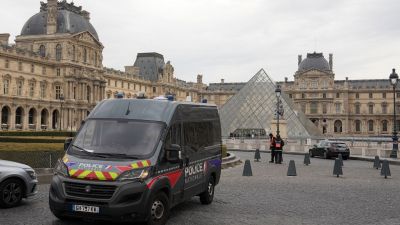Cavalry units to join in fight against Kashmir militants
NEW DELHI, July 21: In the most far-reaching decision it has taken in 40 years of counter-insurgency operations (CI-OPS), the Army is to ...

NEW DELHI, July 21: In the most far-reaching decision it has taken in 40 years of counter-insurgency operations (CI-OPS), the Army is to send some of its most illustrious and well-known cavalry regiments to Jammu and Kashmir for active duty in `Operation Rakshak II’.
The implementation of this decision has already begun, and South Block expects great benefits to accrue from this near-revolutionary move. What this means, said South Block sources, is that these regiments will mothball their tanks, and take up rifles in their new CI role.
“These armour types are going to cross a major dividing line which will benefit them personally and the Army as a whole,” said an officer familiar with the situation in Jammu and Kashmir.
While South Block is tight-lipped on what influenced this momentous decision, indications are that it was a combination of the nuclear deterrent and the state of insurgency in Jammu and Kashmir. The overt weaponisation of India’s nuclear systems has resulted is a situation where aconventional conflict has receded as a possibility. And, hypothetically, were it ever to happen, the role of tanks would be minimal at best.
“There is no question any more of dreaming up cavalry charges across the plains of Punjab. The moment we make a breakthrough, the Pakistanis are certain to nuke us, so I honestly believe India has to rule out that option. Comfortable as we are with our nuclear deterrent, I think we can safely use our cavalry boys in other roles,” said a senior Armoured Corps officer.
The other reason being mentioned is that the level of insurgency in Jammu and Kashmir has seen a marked shift, for the better. There are areas where non-infantry units could easily handle the stresses, say South Block sources. “We do not visualise any greater induction of infantry units, and in areas where a need exists for fresh troops, there is a belief that well trained armoured regiments can handle the situation,” said a senior South Block officer. “After all what they will experience is livesituation combat training, something that always stands in good stead for any soldier,” he added.
The Armoured Corps has been sending its officers and jawans to the Assam Rifles, Rashtriya Rifles, and to infantry units on attachment, its regiments have never moved as a whole for CI-OPS. Numerous armoured, as well as artillery, officers and jawans have also been decorated for their performance in CI-OPS. Though some regiments were deployed for `Op Rakshak’ in Punjab earlier in the decade, that was, however, in addition to their primary task of training for armoured thrusts in the plains. “This is a whole new ball game for us, and one which is very exciting,” said an officer in South Block.
The regiments moving for CI-OPS are 2nd Lancers, 4 Hodsons Horse, 9 Deccan Horse, 16th Cavalry, and 84 Armoured. They will be mothballing their tanks so as to preserve the equipment. The mothballing process basically involves removing the various oils, greasing some of the moving parts, and then sealing the tanks in atotally air-tight and dry environment. This is in order so as to prevent moisture from seeping into the vital and high-technology portions. While the process costs roughly Rs 50,000 per tank, “it ends up saving crores of precious machinery,” said an Armoured Corps officer.



- 01
- 02
- 03
- 04
- 05




























